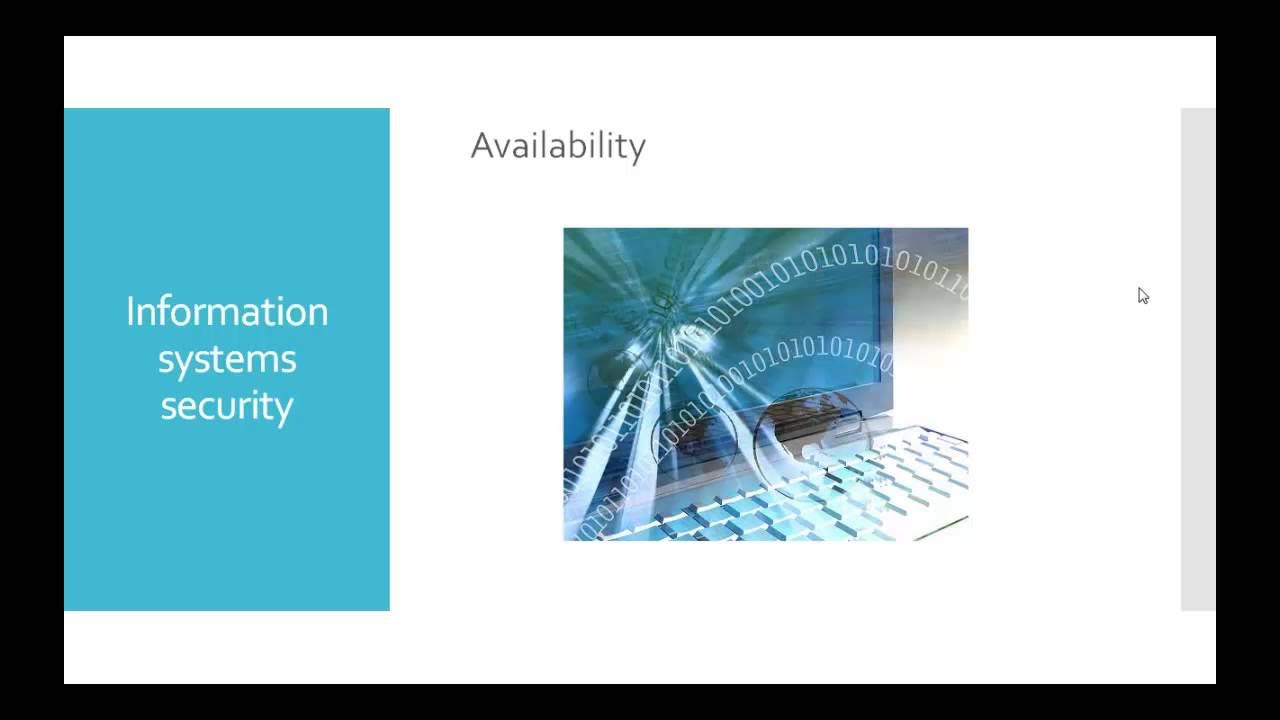ICT Infrastructure & Information Security 2
Summary
TLDRThis video lecture delves into the critical role of information security in ICT infrastructures, emphasizing the importance of data as a vital business resource. It discusses the rise in computer-related crimes and the necessity of technical and non-technical solutions to ensure a secure environment. The lecture outlines three key conditions for secure data handling: privacy, authentication, and non-repudiability. It also explores encryption techniques, including symmetric and asymmetric cryptography, and explains the function of firewalls in protecting private networks from unauthorized access and potential threats.
Takeaways
- 📚 Information security is crucial for modern businesses as data is a vital resource and the target of increasing computer-related crimes.
- 🔒 Three essential conditions for secure ICT systems are privacy, authentication, and non-repudiability, ensuring only authorized access and verification of identities and transactions.
- 🛡️ Data security involves protecting information from external threats, focusing on confidentiality, integrity, and availability.
- 🔑 Computer-based security measures include authorization strategies, username and password combinations, smart cards, biometrics, and encryption techniques.
- 🔒 Non-computer-based security involves establishing security policies, securing the working environment, and ensuring proper data backup in secure locations.
- 🗝️ Encryption is an ancient technique for keeping messages secret, transforming them into ciphertext using a cryptographic key, which can only be decrypted by those possessing the key.
- 🔄 Symmetric cryptography uses a single key for encryption and decryption, exemplified by the Data Encryption Standard (DES).
- 🔑 Asymmetric cryptography, or public-key cryptography, uses two keys, a public key for encryption and a private key for decryption, with RSA being a well-known example.
- 🔒 RSA cryptosystems rely on the difficulty of factoring the product of two large prime numbers, with public and private keys playing roles in encryption and authentication.
- 🤝 LSA cryptosystems allow for message encryption with the sender's private key for authentication, creating a digital signature that cannot be denied.
- 🔥 Firewalls act as barriers to protect private networks from unauthorized access and potential threats by controlling incoming and outgoing network traffic based on security criteria.
Q & A
What is the significance of information security in modern business?
-Information security is crucial in modern business as data and information are considered vital resources, forming the lifeblood of commerce and transactions, and thus require protection against computer-related crimes and unauthorized access.
What are the three conditions that must be satisfied for secure ICT systems?
-The three conditions are privacy, authentication, and non-repudiability. Privacy ensures that data is accessible only to those with the right to access it. Authentication verifies the identity of users and parties in a transaction. Non-repudiability ensures that users cannot deny their actions or the sending of messages within the system.
What is the role of encryption in data security?
-Encryption plays a vital role in data security by transforming messages into a meaningless script called ciphertext using a cryptographic key, which can only be decrypted by someone possessing the same key, thus keeping the message secret from unauthorized access.
What are the two main types of encryption algorithms?
-The two main types of encryption algorithms are symmetric cryptography, which uses a single key, and asymmetric cryptography, which uses two keys, a public key and a private key.
Can you explain the Data Encryption Standard (DES)?
-The Data Encryption Standard (DES) is a symmetric cryptography algorithm developed by IBM for the US government. It uses a single key for both encryption and decryption of data.
What is RSA cryptosystem and how does it work?
-The RSA cryptosystem is an asymmetric cryptography algorithm that is based on the principle of multiplying two large prime numbers to create a product that is difficult to factor back into the original numbers. It uses a pair of keys, a public key for encryption and a private key for decryption.
What is the purpose of a digital signature in the context of LSA cryptosystems?
-A digital signature in LSA cryptosystems serves as an authentication path, ensuring that the sender of a message cannot deny having sent it. It is achieved by encrypting the message with the sender's private key, which can only be decrypted by using the sender's public key.
What is a firewall and how does it protect a private network?
-A firewall is a system designed to protect a private network from external threats such as hackers, software viruses, and unauthorized access. It restricts access to the network and examines all incoming and outgoing messages, blocking those that do not meet specific security criteria.
What is the function of a proxy server in a firewall?
-A proxy server in a firewall acts as an intermediary between a web browser and a web server. It examines all data packets entering or leaving the private network, making decisions to accept or reject them based on an access control list and security policies.
What are some computer-based security measures mentioned in the script?
-Some computer-based security measures mentioned include authorization strategies, username and password combinations, smart cards, biometrics, and encryption techniques.
What is the importance of a secure working environment and proper backup in data security?
-A secure working environment and proper backup are essential for data security as they help protect against data loss, corruption, and unauthorized access. They ensure that data can be recovered in case of any security breaches or system failures.
Outlines

Dieser Bereich ist nur für Premium-Benutzer verfügbar. Bitte führen Sie ein Upgrade durch, um auf diesen Abschnitt zuzugreifen.
Upgrade durchführenMindmap

Dieser Bereich ist nur für Premium-Benutzer verfügbar. Bitte führen Sie ein Upgrade durch, um auf diesen Abschnitt zuzugreifen.
Upgrade durchführenKeywords

Dieser Bereich ist nur für Premium-Benutzer verfügbar. Bitte führen Sie ein Upgrade durch, um auf diesen Abschnitt zuzugreifen.
Upgrade durchführenHighlights

Dieser Bereich ist nur für Premium-Benutzer verfügbar. Bitte führen Sie ein Upgrade durch, um auf diesen Abschnitt zuzugreifen.
Upgrade durchführenTranscripts

Dieser Bereich ist nur für Premium-Benutzer verfügbar. Bitte führen Sie ein Upgrade durch, um auf diesen Abschnitt zuzugreifen.
Upgrade durchführen5.0 / 5 (0 votes)






